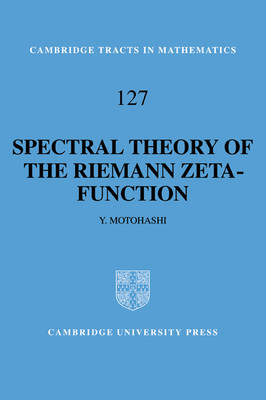
Spectral Theory of the Riemann Zeta-Function
Seiten
2008
Cambridge University Press (Verlag)
978-0-521-05807-0 (ISBN)
Cambridge University Press (Verlag)
978-0-521-05807-0 (ISBN)
Professor Motohashi shows that the Riemann zeta function is closely bound with automorphic forms and that many results from there can be woven with techniques and ideas from analytic number theory to yield new insights into, and views of, the function itself.
The Riemann zeta function is one of the most studied objects in mathematics, and is of fundamental importance. In this book, based on his own research, Professor Motohashi shows that the function is closely bound with automorphic forms and that many results from there can be woven with techniques and ideas from analytic number theory to yield new insights into, and views of, the zeta function itself. The story starts with an elementary but unabridged treatment of the spectral resolution of the non-Euclidean Laplacian and the trace formulas. This is achieved by the use of standard tools from analysis rather than any heavy machinery, forging a substantial aid for beginners in spectral theory as well. These ideas are then utilized to unveil an image of the zeta-function, first perceived by the author, revealing it to be the main gem of a necklace composed of all automorphic L-functions. In this book, readers will find a detailed account of one of the most fascinating stories in the development of number theory, namely the fusion of two main fields in mathematics that were previously studied separately.
The Riemann zeta function is one of the most studied objects in mathematics, and is of fundamental importance. In this book, based on his own research, Professor Motohashi shows that the function is closely bound with automorphic forms and that many results from there can be woven with techniques and ideas from analytic number theory to yield new insights into, and views of, the zeta function itself. The story starts with an elementary but unabridged treatment of the spectral resolution of the non-Euclidean Laplacian and the trace formulas. This is achieved by the use of standard tools from analysis rather than any heavy machinery, forging a substantial aid for beginners in spectral theory as well. These ideas are then utilized to unveil an image of the zeta-function, first perceived by the author, revealing it to be the main gem of a necklace composed of all automorphic L-functions. In this book, readers will find a detailed account of one of the most fascinating stories in the development of number theory, namely the fusion of two main fields in mathematics that were previously studied separately.
1. Non-Euclidean harmonics; 2. Trace formulas; 3. Automorphic L-functions; 4. An explicit formula; 5. Asymptotics; References; Index.
| Erscheint lt. Verlag | 28.1.2008 |
|---|---|
| Reihe/Serie | Cambridge Tracts in Mathematics |
| Zusatzinfo | Worked examples or Exercises |
| Verlagsort | Cambridge |
| Sprache | englisch |
| Maße | 152 x 230 mm |
| Gewicht | 396 g |
| Themenwelt | Mathematik / Informatik ► Mathematik ► Analysis |
| Mathematik / Informatik ► Mathematik ► Arithmetik / Zahlentheorie | |
| ISBN-10 | 0-521-05807-4 / 0521058074 |
| ISBN-13 | 978-0-521-05807-0 / 9780521058070 |
| Zustand | Neuware |
| Haben Sie eine Frage zum Produkt? |
Mehr entdecken
aus dem Bereich
aus dem Bereich
Buch | Softcover (2024)
De Gruyter Oldenbourg (Verlag)
59,95 €


